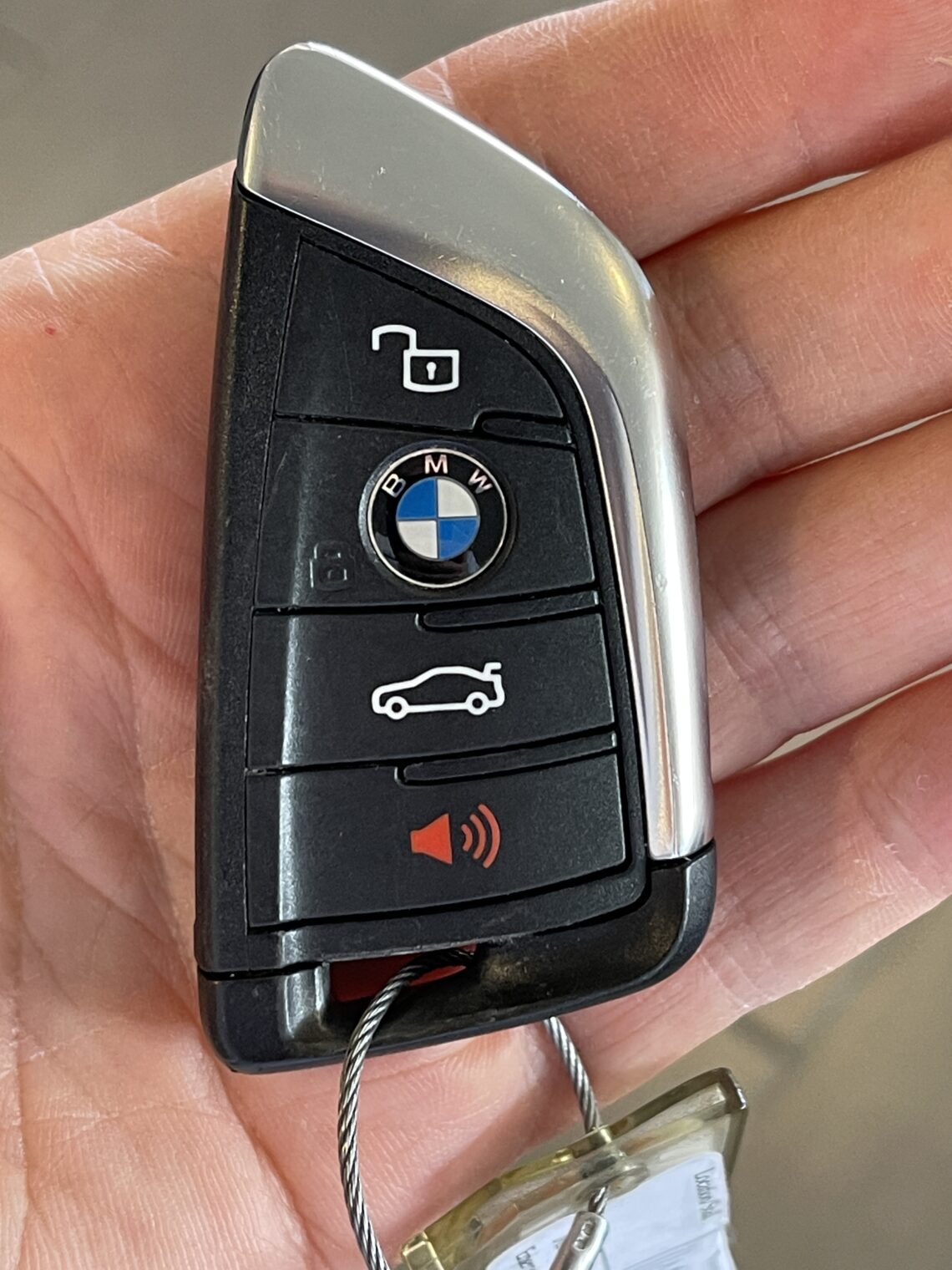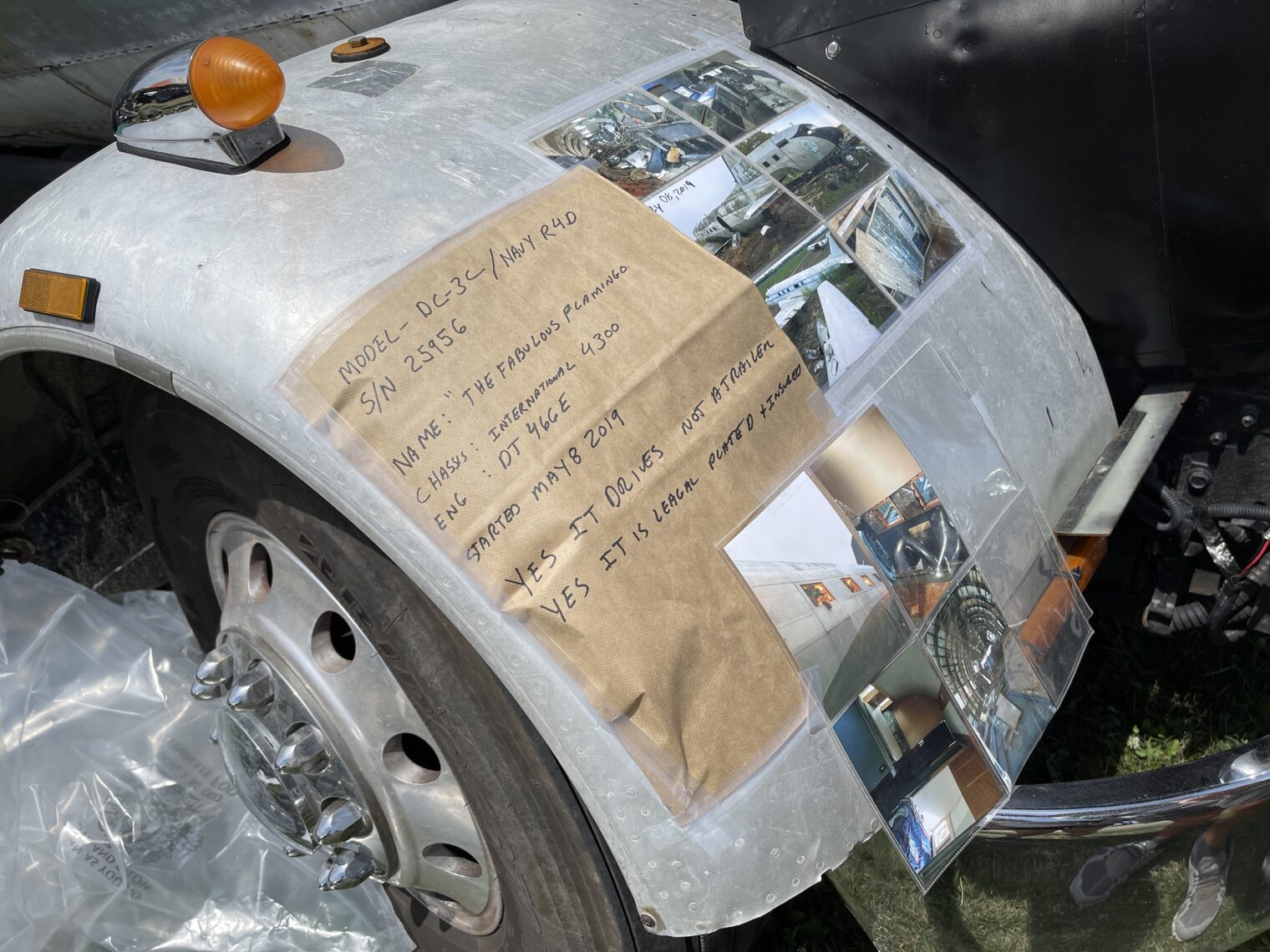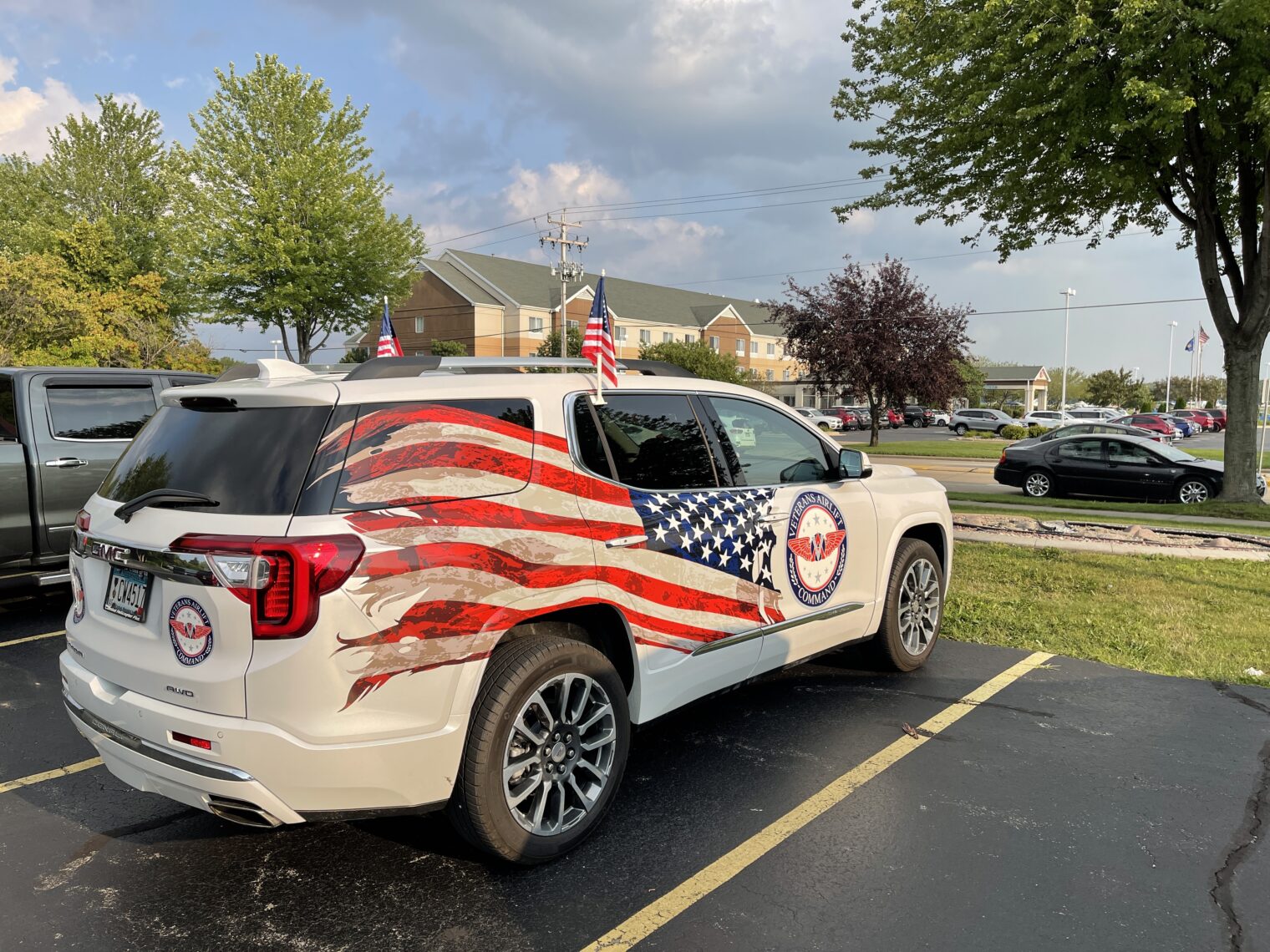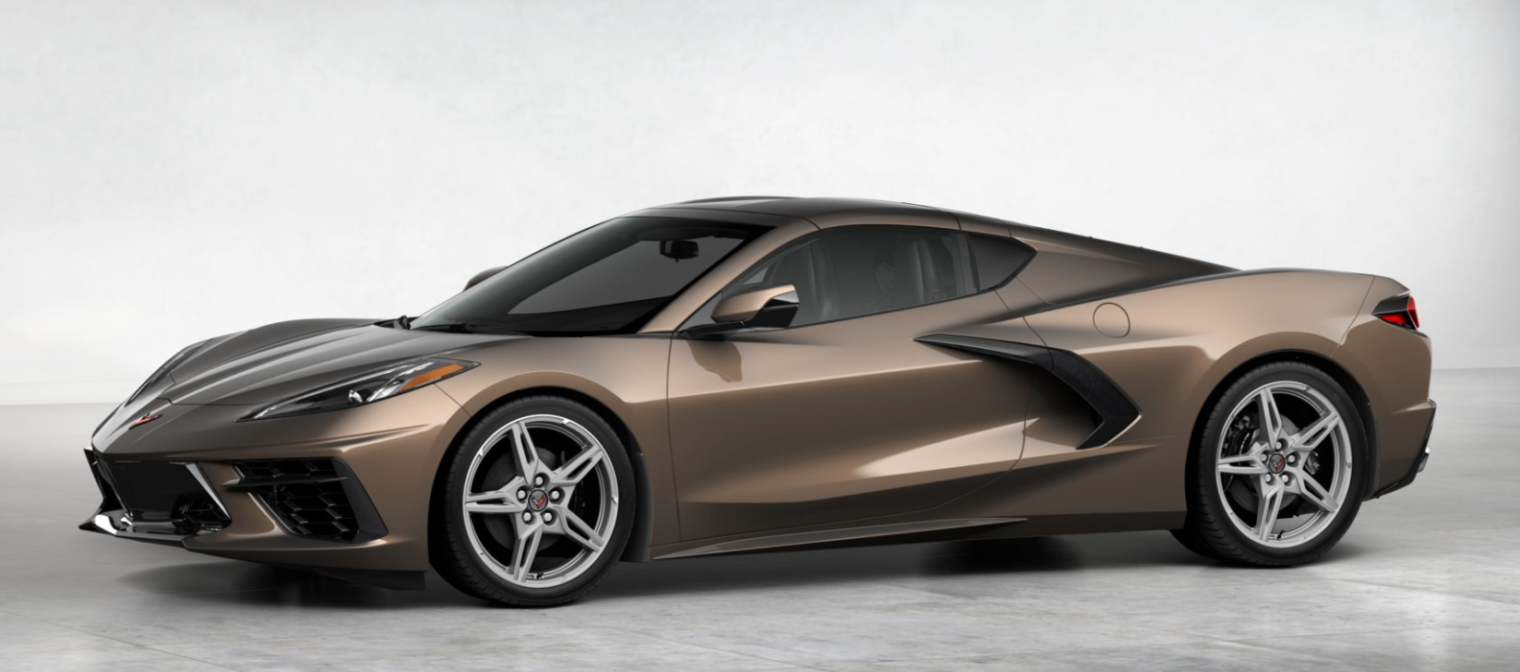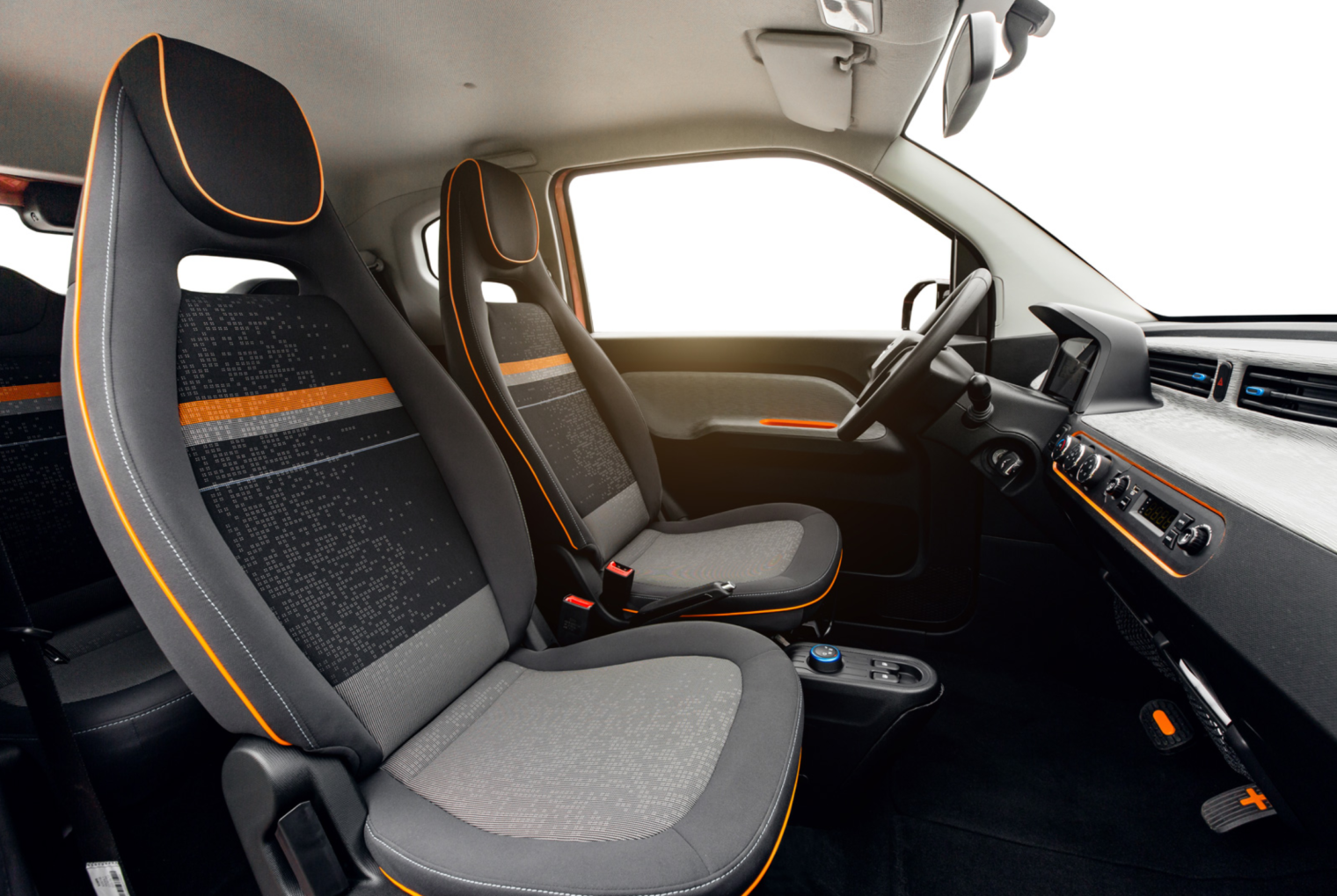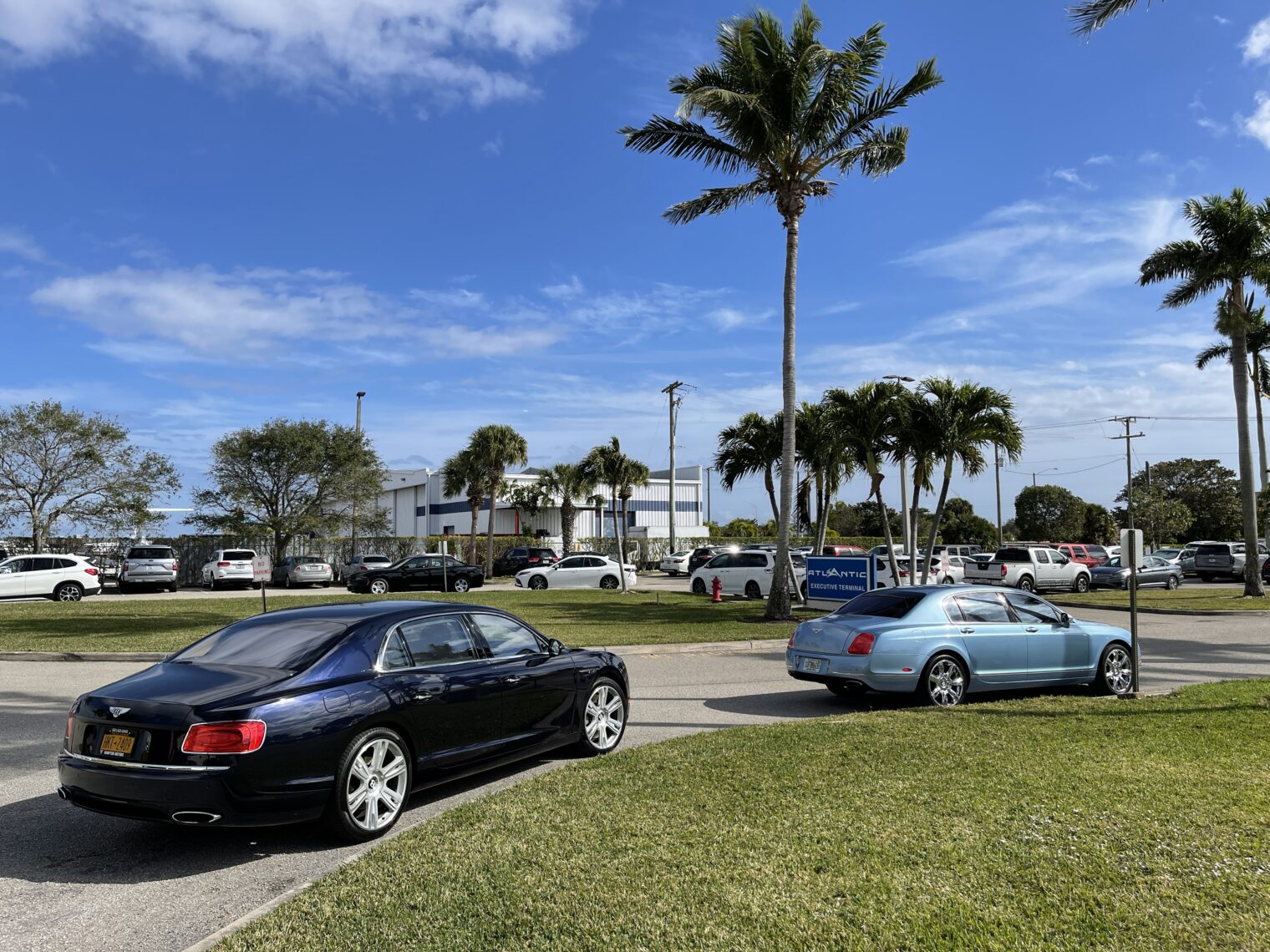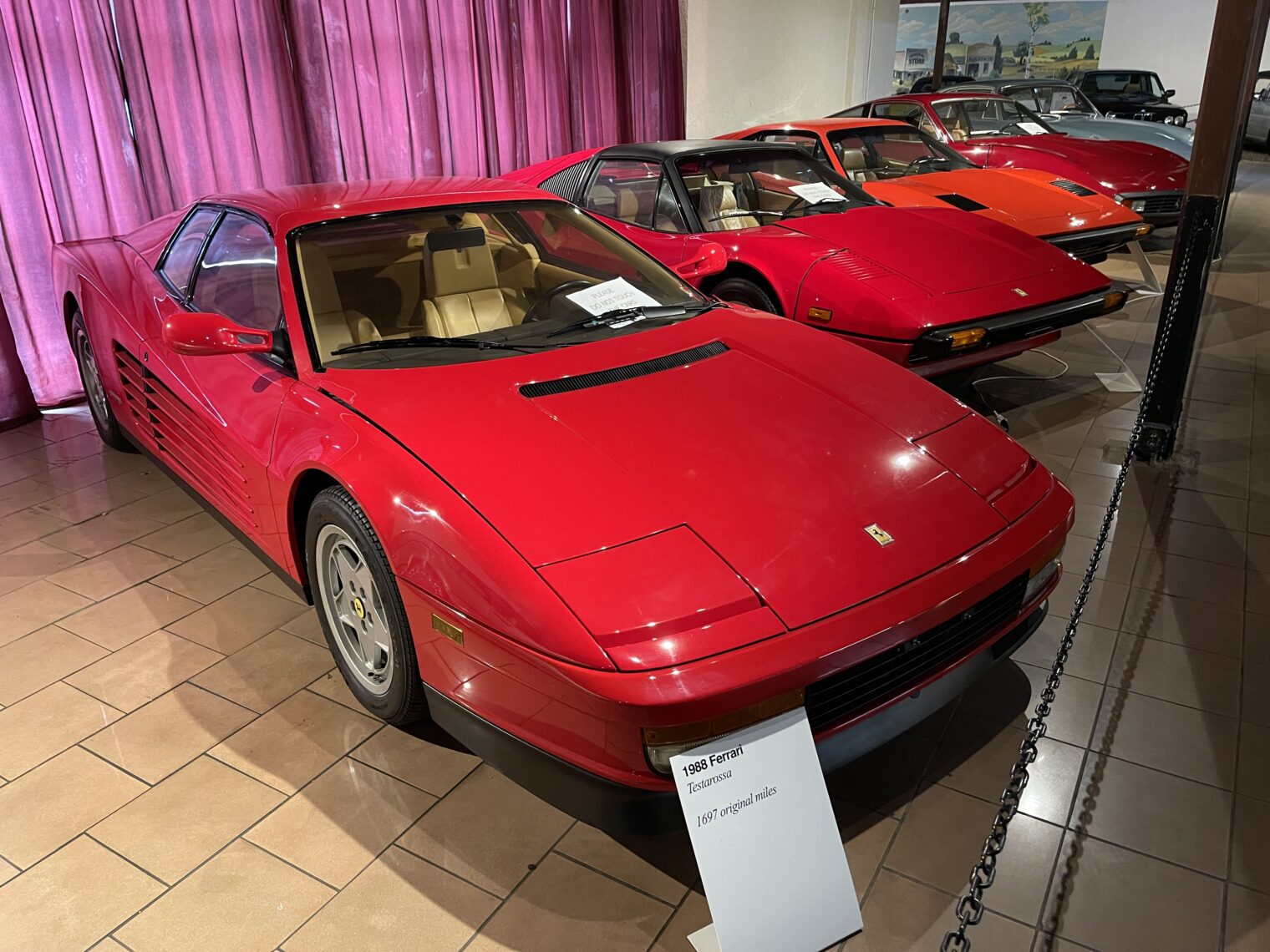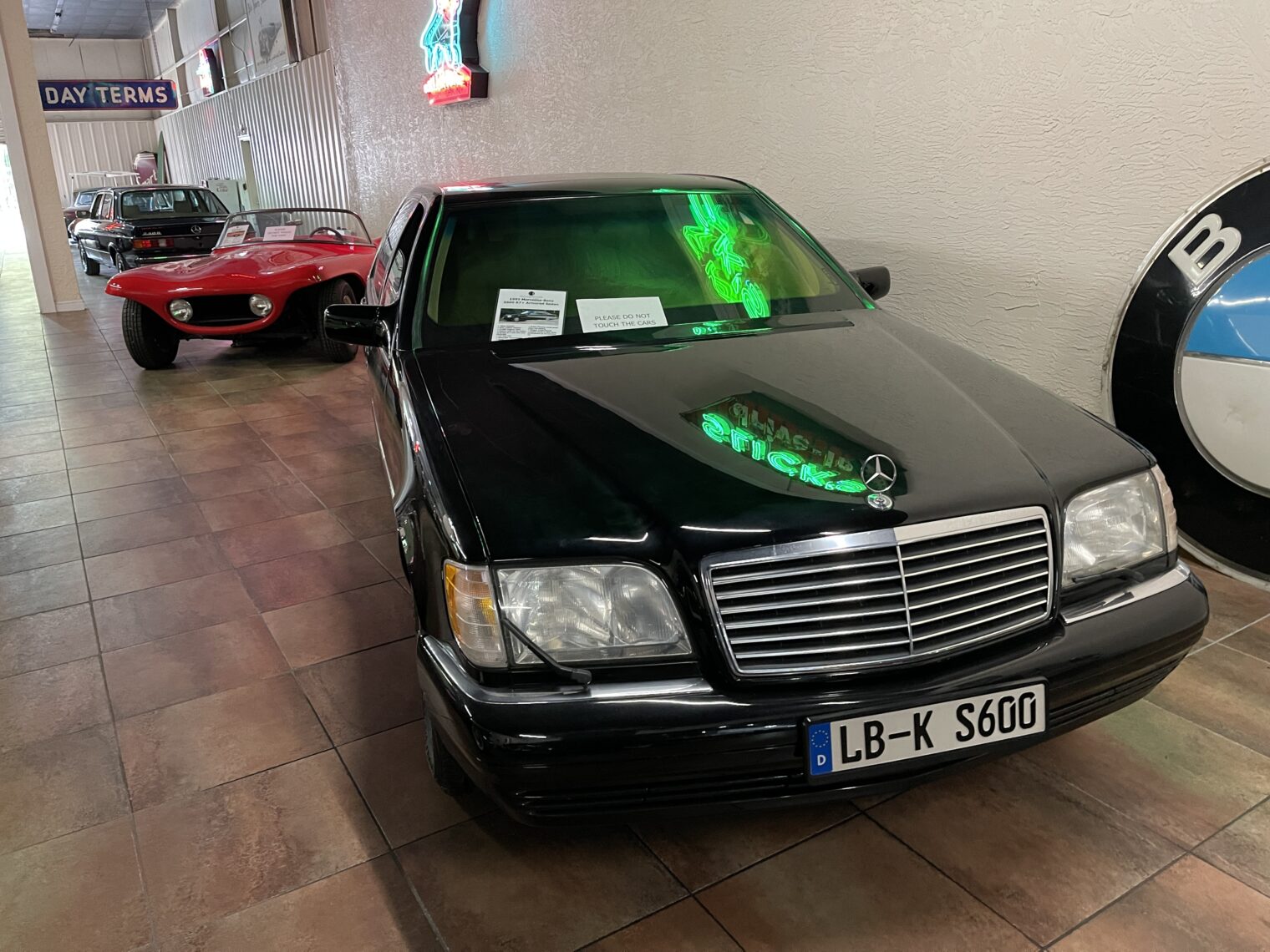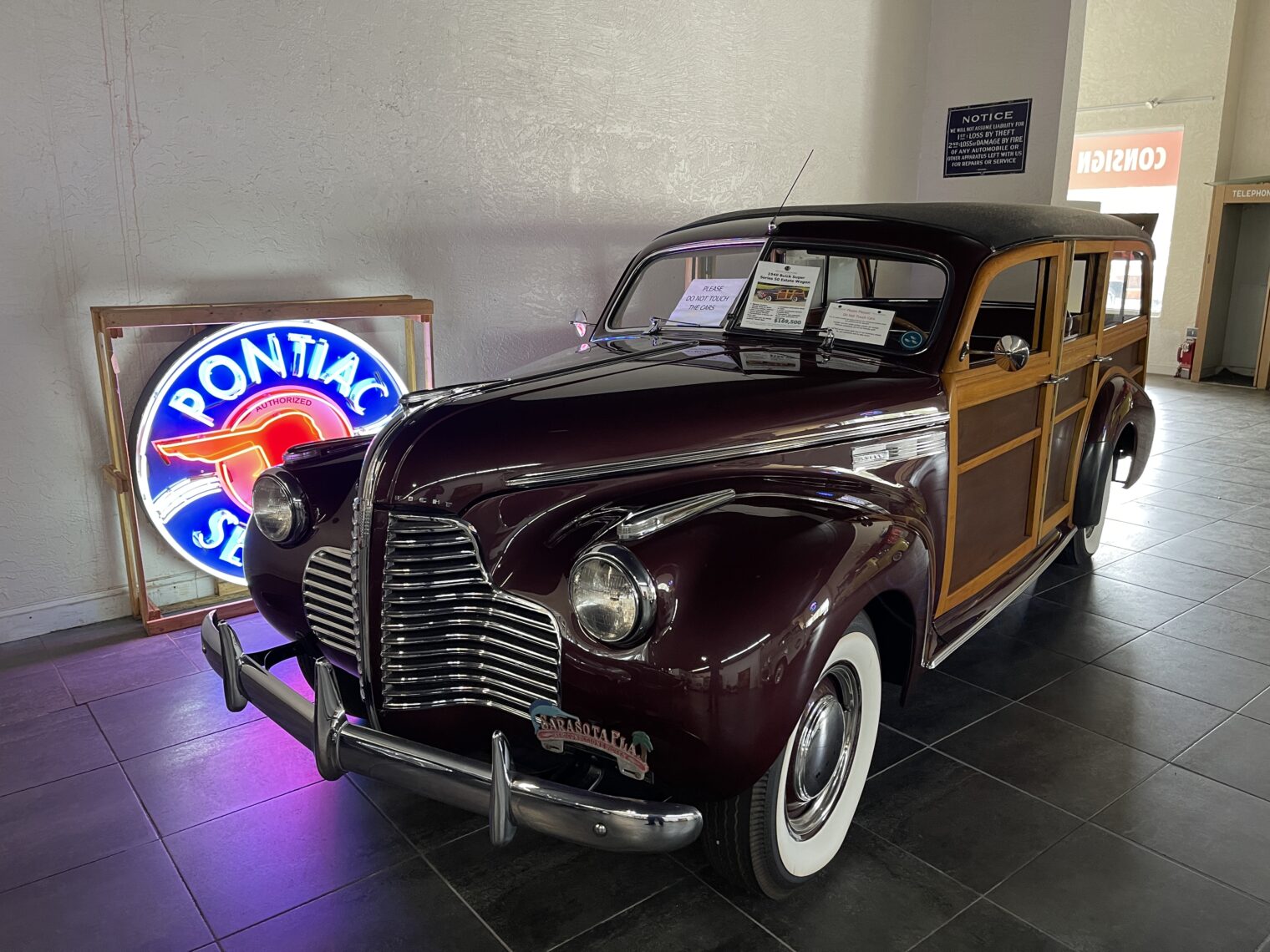German Emperor (BMW) has no clothes?
Our recent trip through the charred American economic landscape involved three rental cars and five Uber/Lyft rides. Nobody in Detroit wants to work, apparently, so it was tough to get rides. We ended up having to pay over $100 for a 20-minute trip in a “luxury SUV” because nobody was available at 5 pm in any of the other options. One out of five Uber/Lyft drivers wore a mask correctly and consistently.
Our National Ford Fusion in Cleveland smelled like it had been owned and driven for all of its previous 50,000 miles by a chain smoker. Hertz in Niagara Falls didn’t deliver the car to the airport as promised (“we don’t have enough staff”), but then “upgraded” us to a BMW X3. The ride was harsh, the electronics were confusing, and the kids gave the prestige SUV a thumbs down. As an example of how bad the user interface on the car is, here’s the key fob. Unlock is an unlock symbol. To lock the car, press the BMW logo:
Note that they still had to put a subtle lock symbol next to the logo, as a guide for the bewildered. That the interface had to be patched like this did not prompt any second thoughts!
In Oshkosh (Appleton, actually, since we wimped out on the KOSH VFR arrival), Enterprise gave us a new BMW 530i, offering some dual instruction on how to change gears “because nobody can ever figure it out.” I was prepared to love this expensive machine, but the suspension interacted horribly with slight waves in the Interstate 41 pavement. The BMW bucked for every highway mile and let us feel every pothole. Maybe it was the suspension configuration? We found a “Comfort setting” next to the gear selector, which didn’t seem to help, but led to a fun exchange with the kids. “Put in on Comfort” they shouted when we entered the highway. “I don’t have any comfort!” said the 7-year-old after a minute or two. Thumbs down on this one too!
Maybe the answer is that BMWs offer race car-like performance and therefore we shouldn’t expect the suspension to be compliant? The 530i didn’t seem to corner especially well or handle nimbly. The thing weighs as much as our Honda Odyssey minivan and seemed to have almost as much body roll in corners, a poor showing considering that it is 2X the price and 1/2 the interior volume.
Can someone explain why BMWs are good?
Bonus: Niagara Falls…
Related:
- Car and Driver on the 5-series (a mediocre rating)
- Car and Driver on the top-of-the-line 3-series (beaten by an Alfa Romeo sedan)
- Department of Minimal Inflation: The $70,000 Tesla S is now $91,000+.
- Department of Automotive Karenhood: “New York Auto Show Officially Canceled for 2021” (“The show had been rescheduled to August but is now off due to the COVID-19 Delta variant and increasingly stringent restrictions in New York City.”)
